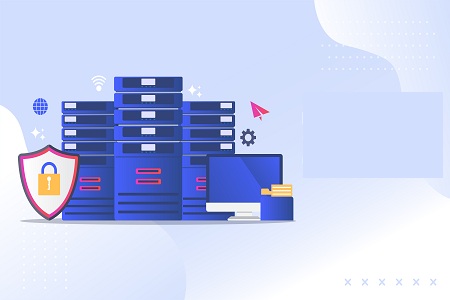Salient IT Services › Data backup solutions Folsom
What you need to know about data backup solutions in Folsom
Having an effective data backup solution in place can protect you from all kinds of issues, from employees accidentally deleting an important file to an outage which disrupts your access to your normal infrastructure. The good news is that it’s often possible to manage data backups very effectively without having to spend a vast amount of money. With that in mind, here is a quick overview of what you need to know about data backup solutions in Folsom.
Hardware-based data backup solutions are now almost totally obsolete
In the old days, it was quite common for companies, even SMBs, to use hardware-based data backup solutions. These not only managed the data backup process but usually came with integrated physical storage. At the time, they were regarded as a convenient, all-in-one solution. These days, however, they’re more likely to be seen as a vulnerable, single-point-of-failure, which is best avoided.
If you’re still running a data center, then there may be a business case for continuing to use physical storage for your local data backups, but even in data centers, it’s usually very much preferable to use the cloud to store off-site data backups. There are many reasons for this, but possibly the most important is that it can really reduce the time it takes to restore data from them since you can just download it from the internet instead of needing to go and get a physical device from off-site storage.
Sensitive data can usually be stored in a public cloud as long as it is encrypted
If you’re running a data center or a private cloud, it’s usually quite straightforward to export your data backups to a public cloud. You would simply encrypt them on your own servers and upload them in much the same way as any other file. Rather ironically, if you’re in the public cloud, life can be a bit more challenging because you need to use an encryption solution that works in at least one public cloud. Ideally, you’d usually want an encryption solution that worked in both public clouds so that you could decrypt and re-encrypt your data in the second public cloud.
The reason this would be a benefit is that it would allow you to use your second public cloud as a disaster recovery solution. For completeness, you would need to ensure that your data backup location also contained everything you needed to work with the data, for example, an operating system and applications. This makes a little extra work, but the payoff is that you would have protection not just against the erroneous deletion of your data (accidental or deliberate), but also against anything happening to your usual public cloud platform.
While it has to be acknowledged that the major public cloud platforms do have an excellent track record with regard to keeping their services running, nothing is guaranteed so it’s as well to be prepared, especially when you can do so at minimal extra cost.
If you’re using a private cloud you could choose to backup your data to a second private cloud
If you’re working in a private cloud then your disaster recovery plan will presumably be a second private cloud. This raises the question of whether you should bother using the public cloud to hold your data backups or if you should just store them directly in your disaster recovery cloud. The answer to this question will generally depend on whether your priority is to manage costs or to minimize the time it takes you to recover after a disaster.

Usually, storing data backups in the public cloud is the most cost-effective option, even though it makes for more complicated architecture as you will need to connect the public cloud which is storing your data backups to both of your private clouds and ensure that both clouds have import/export access to it so that you can retrieve your updated data from your disaster recovery cloud and populate it in your main cloud.
When you’re recovering to your main system, your recovery times are likely to be the same regardless of whether you store your data in a public cloud or in a second private cloud. If, however, you have to switch to your disaster recovery system, then having your data “ready and waiting” on-site would allow you to get up and running much more quickly than you would if you had to wait for it to be transmitted from the public cloud and then decrypted. Obviously, the more data you have to transmit, the bigger this difference would become.
If you’d like to speak to a reputable and experienced data backup solutions provider in Folsom, please click here now to contact Salient IT.


 (3 votes, average: 3.67 out of 5)
(3 votes, average: 3.67 out of 5)
